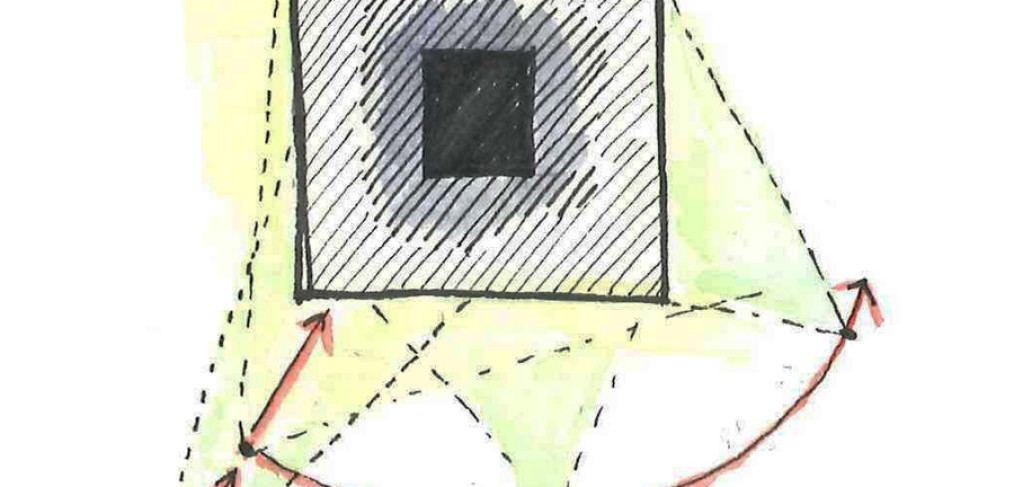
Religious architecture and light. Part II
Lets begin with this historical explanation and to link it with these two main cases. Firstly, the light use in temples in Ancient Egypt will be described.
In these kinds of buildings, the use of light follows a progressive linear configuration. In this way, the arrangement of the spaces in the temple follows the design of the light. Each space, from the door to the interior, is darker than its precedent and, as a consequence, the individual walks along a progressive path from the light to the obscurity.
It is also interesting to notice that, in general, in southern countries where the sun is strong, the mysticism is usually more related with the darkness. This case is repeated in Ancient Greece and Rome, where it is said that “the god resides in the darkness.” In Ancient Greece we can recognise some lighting characteristics as intimately related with their culture and beliefs. As we already said before, it was a common conviction that gods should reside in the darkness. 5 Therefore, the space where the statue of the god is found in Greek temples is always closed to incoming daylight. It is also a devoted closed space, as only the priest could access the inside room of the temple. As a result of this situation, and probably also to the benevolent climate, the ceremonies and basic rituals were performed outside. 6 Therefore, it is important to notice the light effects in the outside volume, characterized by the filtering columns that surround the temple (image 10). The depth that the game of light and shadows this volume produces is a clear feature of this building typology. However, the sculptural exterior of the temple is also accentuated by the reliefs situated in different parts of the entablature, which also have a leading role in reflecting the light and the shadows of the sun light.
The case of Ancient Rome could be described as an inheritance of the Greeks. The general composition of the temple was quite similar, as well as the belief that God should reside in the darkness as well. Nevertheless, there is a very interesting building from the Roman period that is worthy to analyse from the point of view of light: the Pantheon of Rome, commissioned by Marcus Agrippa and rebuilt in 126 AD by the emperor Hadrian. Even if the general belief has always related the building with a temple for all gods, mainly because of its name, the fact is that it was more a spiritual building than a religious one. It is believed that the emperor used to go once a year and stay the whole day meditating and observing the daylight evolution in its diurnal course. In terms of light configuration, we can recognize as an objective, the overlap of a literal and metaphoric use of light. To achieve this sensation, the essence of daylight is added to a pattern of sunlight (image 11). In this way, we recognize two movements developing together. We can see the pattern of the sun coming from the oculus and moving in the different surfaces (image 12). We can also see how the diffuse daylight that illuminates the entire space gives the ambience the restful and light atmosphere perceivable in the building. The combination of these two lighting strategies confers the space a particular character appreciated during centuries. This spiritual environment is probably what promoted the adaptation of the building to the next religions, saving it from the destruction.
In the last period of the Roman Empire the Byzantine architecture started to emerge in the East. In this case of religious architecture, the main aim was to create a space, the church, which made it possible to celebrate the divinity as heaven on earth. Therefore, the use of the light in this period was intimately related with the objective of creating the feeling of being in-habiting in a reflection of heaven inside the church. At the same time, there was an interest of creating a centripetal direction towards the central dome, where the sanctuary was placed (image 13). Therefore, the objective was to carry the sight of the devoted to this specific point. 8 These concepts are easily understood in observing the Hagia Sophia. In its main space it is possible to feel the impression of an overwhelming spiritual light (image 14), which actually promotes the impression of feeling heaven on earth. The combination of light penetrating from the windows in the central dome, creating a focus on this part, and the materials gloomy quality are the means that make this sensation possible. Therefore, the position shifted radically from the darkness in the interior spaces of Greek temples to the aim for divine illumination in the inside of the byzantine church.

reflection in the inside of Hagia Sophia. Basilica of Hagia Sophia. Istanbul. Turkey. http://www.teslasociety.com (photography).
(to be continued…)
Author: Glòria Serra Coch












